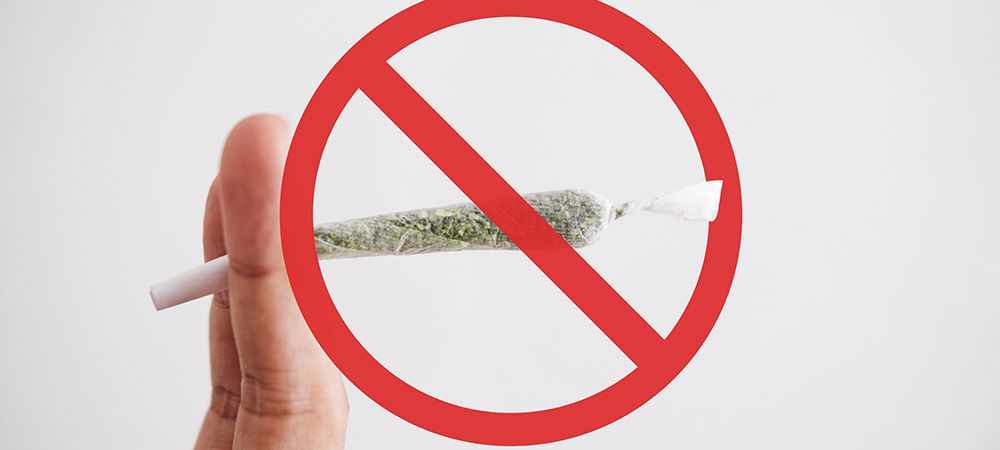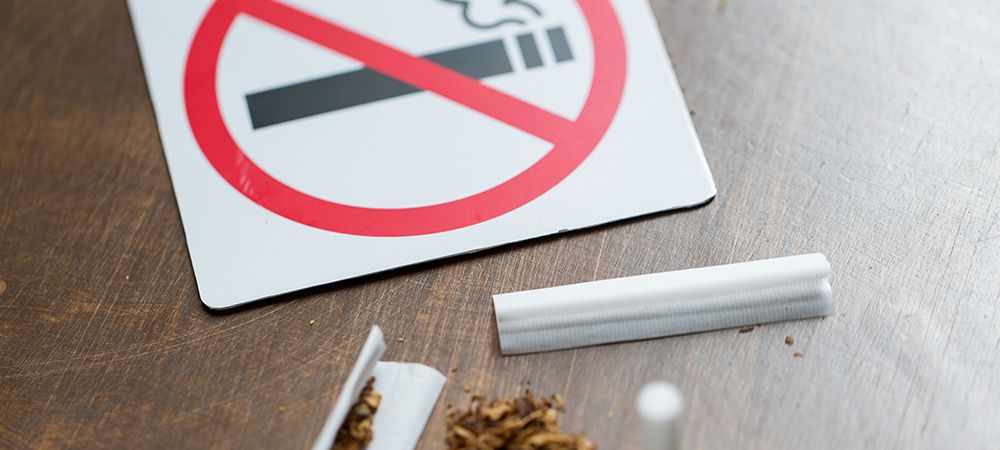What is the Easiest Way to Quit Smoking Weed?
The most common way people consume weed is smoking. While cannabis is less addictive than other hard drugs, addiction is still a real possibility. Also, cannabis users may experience side effects like hallucination and impaired judgment. Therefore, it’s important to find ways to stop cannabis abuse.
The easiest way to quit smoking weed is to abstain from things that influence its use. However, quitting cold turkey is painful hence the need to be around loved ones. Also, you’ll need to be determined to go through with it as withdrawal symptoms aren’t pleasant.
Unsure of where to begin? This article is a guide to quitting marijuana abuse. We outline the dangers of smoking weed while showing you the easiest ways to quit smoking weed.
Dangers of Smoking weed
Although cannabis can be beneficial to the body, it also has adverse effects. For instance, people who smoke weed often have lung and respiratory issues..
Here are the dangers of smoking weed.
Lung and respiratory problems
The smoke from weed has many chemicals. These may include ammonia, hydrogen cyanide, and formaldehyde. Also, the majority of these chemicals are known to cause lung problems. The reason is most weed users breathe these chemicals straight into their lungs.
Furthermore, there is no substantial evidence to show that marijuana causes lung cancers like cigarettes. However, precancerous changes have been observed in the lungs of those who smoke. Also, the risk of this occurring is higher in those who smoke cigarettes alongside weed.
There is no doubt that smoking weed has other effects on the lungs. For example, coughing, wheezing, and difficulty breathing are effects of smoking weed on the lungs. Additionally, a study in Cancer Causes and Control showed that heavy marijuana smoking might raise the risk of lung cancer.
Adverse effects on the brain
Imaging scans on the brain of a person that smokes weed show the effects of heavy marijuana use. The scan shows how marijuana alters blood flow to some parts of the brain. Also, these parts are responsible for attention and memory.
Furthermore, the morphology and the size of the thalamus appeared different from the scan. The thalamus is the part of the brain that deals with information processing. As a result, weed smokers generally perform lower in tests than those nonsmokers.
Also, people who regularly smoke weed are at a higher risk of being schizophrenic. However, this is primarily influenced by hereditary factors in smokers.
Heart problems
Marijuana causes rapid heart rate, lasting for about three hours shortly after intake. The overall effect of this is the increased likelihood of a heart attack. Also, a higher risk is associated with older people and those with heart problems.
Errors in child growth and development
Some pregnant women use weed to battle nausea, although doctors strongly warn against it. In addition, intake of marijuana during pregnancy is likely to reduce the weight of their babies at birth.
Also, it facilitates brain developmental and behavioural issues in babies.
Additionally, babies exposed to weed are likely to have cognitive issues. These issues may affect their memory and problem-solving skills.
Related Article: What is Cannabis Use Disorder: Symptoms, Side Effects and Treatment
Easiest Ways to Quit Smoking Cannabis
Addiction to cannabis smoking arises due to the ‘positive’ effects observed in the early usage of cannabis. However, about one in ten cannabis users develop dependence or disorders related to the drug.
Additionally, users below 18 years have about four to seven times more risk of developing dependence on cannabis than users above 18 years.
Furthermore, regardless of the extent or degree of addiction, any user can stop smoking cannabis. Quitting smoking cannabis is, however, dependent on the willingness and determination of the user. Also, there are different strategies you can employ to quit smoking weed easily. But, again, these strategies rely on the nature of the user.
The best way to quit smoking cannabis is to use a trial and error method. This method helps determine which method will be most effective for the user. Also, the different strategies for stopping cannabis smoking are beneficial to different people, mainly because of differences in smoking patterns and dependency.
The tips to quit smoking weed are broadly grouped into two methods:
- Quitting cannabis smoking gradually, and
- Quitting cannabis smoking cold turkey
Quitting cannabis smoking gradually
We highlight the easiest way to quit smoking weed gradually in the step-by-step format below.
Write down your current daily cannabis intake.
Be honest with yourself. At this point you’ll need to have made up your mind to quit smoking weed. It’ll be hard but worth it eventually.
Determine how much you can afford to take off the initial intake daily
Here, it would help if you started with a realistic amount. The point is to adhere strictly to whatever amount you have planned to take daily. Also, consistency is of the essence while trying to quit any habit at all.
Set a timeline for your quit schedule, with a day in view when you will quit
This means selecting a period, say six months, during which you will have completely stopped smoking cannabis. Again, it must be a realistic timeline.
Furthermore, during this timeline, you have to set milestone days. You’ll reduce the amount of cannabis you consume daily than before on those days. Gradually, the daily amount will reduce till you don’t take it anymore.
Additionally, don’t make the intervals too lengthy. Lengthy intervals cause loss of motivation and relapse.
Be patient with yourself
It’s normal to fall short of your expectations. Also, at low periods, don’t feel discouraged. Instead, adjust the goal you were trying to meet to something smaller and more achievable.
Before you start on the reduction regime, research ways to cope with your emotions when you begin
Until you reduce your cannabis consumption daily, you may not realize how much you rely on it. Conclusively, the gradual method may not be the easiest way to quit smoking weed for you. However, your plans throughout the reduction regime must be SMART, i.e. they must be
- Specific,
- Measurable,
- Achievable,
- Realistic, and
- Timely.
Quitting smoking cannabis cold turkey
Quitting cannabis smoking cold turkey refers to a sudden, rather than gradual, quitting of cannabis smoking. Also, you can employ this strategy for an immediate cessation of cannabis. For example, it could be for work, education, legal, or relationship reasons. Additionally, you can go cold turkey when you prefer an all-or-nothing approach to solving problems.
Furthermore, quitting smoking cannabis cold turkey has immediate impacts; the results are observable after a short time. There is, however, the drawback of withdrawal symptoms.
Since cannabis dependence developed over time, your body and mind are accustomed to particular sensations associated with it. Suddenly depriving the body of these familiar conditions will cause the body to crave cannabis more.
Therefore, even while quitting smoking cannabis cold turkey, you have to follow processes. Some tips to quit smoking weed cold turkey include:
Find out precisely what cannabis does for you
Before you quit smoking cannabis, you must understand what cannabis does for your body. Afterwards, you’re to discover a healthy substitute practice that will achieve the same effect as cannabis. You should only stop smoking cannabis when you a healthy substitute.
For some people, smoking cannabis helps them sleep properly. For instance, these people can try showering before bed and sleeping in pitch-dark, well-ventilated rooms. These are methods to sleep better and can be substitute practices while quitting smoking cannabis.
Don’t buy cannabis!
Avoid any form of contact with cannabis or weed dealers. As obvious as this step is, it’s usually the most difficult. Also, while quitting cold turkey, your cravings can get so intense you want to satisfy it ‘a little’. Eventually, you find that you are relapsing.
Additionally, avoiding contact with cannabis will reduce the occurrence of temptations, and ultimately, prevent smoking cannabis. Also, it further helps when you engage in activities that occupy your hours. Being engaged causes you to think less about smoking.
Dispose of all smoking accessories and contacts
The easiest way to quit smoking weed is to avoid contact with any triggers. Unfortunately, smoking accessories are a part of the easily accessed triggers. Also, you can avoid meeting those friends and throw out smoking accessories from the house. Reminding yourself of why you want to stop smoking weed also helps ignore temptations.
Have some people you can trust know about your decision to quit
Your accountability partner must not smoke or be too far away from you. The reason is, some of the tips listed above require some level of imposition and insistence. Also, it gets hard to be harsh on you hence, the need to have someone around.
Be patient with yourself
Quitting cold turkey may look like the easiest way to quit smoking weed, but it isn’t rosy. Relapses are not uncommon. Also, it’s always a better option to restart the process rather than dwell on your mistakes.
Additionally, one of the things to do when you quit smoking weed is to distract yourself. You can even change the environment to avoid things that trigger a relapse. For instance, you can enroll in a marijuana addiction treatment program or a rehab centre.
Challenges Involved in Quitting Marijuana Use
Embarking on a journey of quitting Marijuana use is not an easy feat. It presents different withdrawal symptoms due to long-term dependency. Also, these symptoms are often physical and can be disruptive if you don’t manage them properly.
Furthermore, withdrawal symptoms begin from the first few days and may span several months. Typically, psychological symptoms last longer and require understanding to combat them. Here are challenges you may encounter when you decide to stop smoking weed.
Cravings
This is the primary and most common symptom of marijuana abuse. They may appear suddenly with varying intensity. Also, no approach to quitting weed smoking is immune to cravings.
Even while using the easiest way to stop smoking weed, you’re bound to have cravings. Also, you should consider cravings normal as your body now depends on them to function adequately.
Anxiety
Being agitated or anxious is associated with quitting marijuana use. Anxiety can occur constantly or intermittently. Also, you may find it difficult to relate to people due to these feelings. However, with time, these feelings will subside.
Mood swings and depression
This is another challenge involved in quitting marijuana use. Mood swings and depressive episodes may be recurrent and persistent. However, learning to adjust to life without weed will help suppress these feelings over time.
Cognitive impairment
Regular use of weed can impair cognitive abilities, and you may find that you’re more forgetful. There will be a massive shift as the body adjusts to the substance withdrawal. After that, however, you’ll be back to normal with cognitive behavioural therapy and some medications.
Headaches
Headaches occur due to the body’s dependency on weed. Thankfully, you can alleviate the pain with medications.
Sleeping problems or disorders
Substance withdrawal is known to disrupt your sleeping pattern. One of the most common indications of this is insomnia. Also, it’s common to find people use weed to induce sleep. Hence, withdrawing from weed gradually or suddenly can make falling asleep difficult.
Getting Medical Help During Cannabis Withdrawal
During the withdrawal process, it’s not wrong to seek medical help. However, going through therapy is a highly effective way to prevent relapse. Also, during treatment, you’re likely to tackle the issues contributing to the use of cannabis.
Furthermore, whichever way to quit smoking weed you think is easy for you, you need medical help. For instance, to you, quitting cold turkey may be the easiest way to quit smoking weed. However, there are dangers attached to quitting cold turkey without medical supervision. Here are ways to combat cannabis use withdrawal symptoms.
Cognitive behavioural therapy (CBT)
This method of therapy assists in learning how to recognize unwanted emotions and their management. For instance, it recognizes the use of cannabis to combat stress. Also, CBT teaches identifying stress and blocks the desire to take cannabis. In the same vein, it provides other friendly and healthy methods to get over the anxiety.
Management of contingency
Simply put, this is known as a reward system. For example, a contingency management plan uses the method of attractive rewards for abstaining from substance use. Also, the rewards can include free movie tickets, shopping vouchers or dinner dates. In addition, they serve as an encouragement or commendation for each test result that appears negative.
Motivational enhancement therapy (MET)
MET examines the rationale behind giving up cannabis. During sessions, the therapist asks questions to discover what the patient intends to achieve by smoking weed.
Typically, MET should be the first line of action in therapy to combat Cannabis use. With MET, patients can capitalize on their inner strength as the easiest way to quit smoking weed.
Related Article: All You Need to Know about Medical Cannabis
To Sum It Up
Summarily, whether gradually or going cold turkey, quitting smoking cannabis is achievable. Whether or not you’re a heavy smoker, you can get rid of the habit. All you require is a readiness to quit and the determination to stay sober. Thankfully, this article discusses the easiest ways to quit smoking weed.
While your determination is essential, you shouldn’t play down on medical help. Addiction treatment specialists can help you find the easiest path to quit smoking weed. At Inspire Change Wellness Centre, we offer patients customized, effective addiction treatment programs. Check out our marijuana treatment services today!






